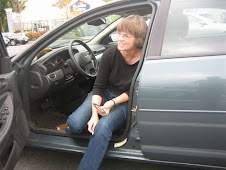Was either nominated (Orange and Man Booker Prize) or won (Encore and Satire First Book Award). So I reserved a couple of her books that I could find on the library website. Started with Girl Meets Boy - The Myth of Iphis. Not sure which came first, Smith's rewriting of Ovid's Metamorphis story or her publisher's decision to issue a collection of contemporary rewritings of these myths. I suspect the latter as after getting through this one, I rechecked the library to see if any others of the Canon Gate collection were available and they were not ... maybe it is yet another one of those soley Brit things.
Apparently this is the only one of Ovid's stories with a quasi-happy ending. Smith just updates and politically corrects the denoument to make it no longer necessary for a girl brought up as a boy to be changed into a boy at a wedding ceremony. Smith conveniently uses this myth as another opportunity to disclose the wonderous normalcy of her being a lesbian and entailed to public affirmation of her love. (She even uses the term "artful" to describe the perfection of this ecstasy.)
Smith's version is larded with almost Shakespearean collections of gender under disguise: the book's first sentence is "Let me tell you about when I was a girl, our grandfather says." He then relates to his twin granddaughters an incident where a female revolutionary dresses up as a messenger boy to elude arrest. The twins, Imogen/Midge and Anthea, live in Scotland and both are employed at a water bottling corporation, another example for Smith to use to propagandize. Melding this message with Canon Gate's intent, Smith writes:
..."I mean, do myths spring fully formed from the imagination and the needs of a society ... as if they emerged from society's subconscious? Or are myths conscious creations by the various money-making forces? For instance, is advertising a new kind of myth-making?"
The plot focuses on Anthea, the twin who dawdles about joining the firm, and tarries outside watching a demonstrator smear anti-corporate slogans on the company's facade. This being Scotland, the graffitist is wearing a kilt. As the protestor slides down the ladder, kilt a-flaring, Anthea falls in love with Robin Goodman. This is Smith at her Woodhouse best: she lives for puns. Robin, is of course, a woman, and she and Anthea become lovers, ultimately marrying at the end of the story.
I'll write up my review of another Smith novel next but I do not have to read her entire opus. These books have been sufficient for me to decide she is not my cup of tea, nor snort of Scotch. However, there are flights of writing were she sings; where she stands on the shoulders of other British Isles writers, and acknowledges not only the reiteration of recurring plots/themes but also echoes styles. Her she reminds me of Joyce: "... Rings that widen on the surface of a loch above a thrown-in stone. A drink of water offered to a thirsty traveler on the road. Nothing more than what happens when things come together, when hydrogen, say, meets oxygen (today's gimmicky NYT's puzzle clues), or a story from then meets a story from now, or stone meets water meets girl meets boy meets bird meets hand meets wing meets bone meets light meets dark meets eye meets word meets world meets grain of sand meets thirst meets hunger meets need meets dream meets life meets end meets beginning all over again, the story of nature itself, ever-inventive, making one thing out of another, and one thing into another ..." If his, if is
Sunday, March 10, 2013
Subscribe to:
Post Comments (Atom)



No comments:
Post a Comment